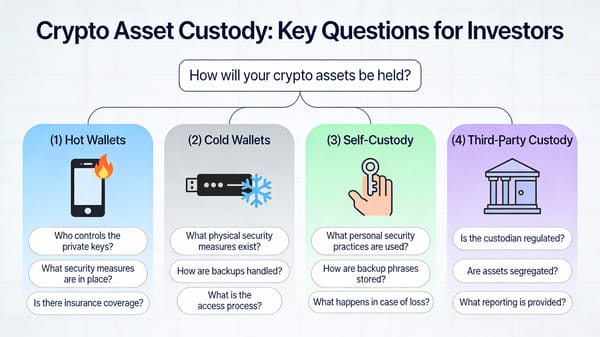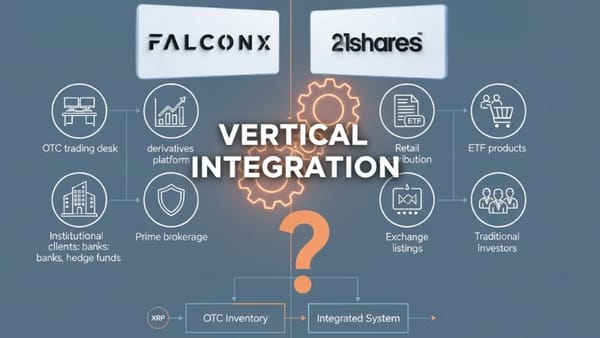Retirement Investment Choice Act Could Permanently Unlock Crypto for 401(k)s
Executive orders can vanish overnight. That's why the Retirement Investment Choice Act matters. This bill would permanently codify crypto access to America's $12 trillion 401(k) market, transforming Trump's temporary executive order into durable law—and unlocking $120-240B in potential inflows.

A groundbreaking legislative push could permanently open America's $12 trillion retirement market to cryptocurrency investments. The Retirement Investment Choice Act (H.R. 5748), introduced by Rep. Troy Downing (R-Mont.) and five co-sponsors on Tuesday, seeks to codify President Trump's August executive order allowing alternative assets—including crypto, private equity, and real estate—into 401(k) retirement plans.
From Executive Order to Permanent Law
The legislation would give Executive Order 14330 "the force and effect of law," according to the National Association of Plan Advisors. Trump's original order directed the Department of Labor (DOL) and Securities and Exchange Commission (SEC) to prioritize opening defined contribution retirement accounts to alternative assets, with a 180-day implementation timeline originally set for early February 2025.
While the executive order has driven headlines primarily around private securities, it explicitly classified cryptocurrencies, commodities, and insurance products as alternative assets eligible for 401(k) inclusion. The Trump administration's move reversed the Biden-era DOL guidance that discouraged crypto in retirement plans due to volatility concerns.
Market Implications and Implementation Timeline
The proposed legislation comes as SEC Chair Paul Atkins announced that the SEC and DOL have begun coordinating on implementing the executive order through formal rulemakings. However, the recent government shutdown and severe staffing cuts at the Employee Benefits Security Administration may impact implementation timelines.
Market analysts estimate that even modest crypto allocations could trigger massive capital inflows. According to recent analysis, a 1-2% allocation across the $12 trillion 401(k) market could translate to $120-240 billion flowing into crypto assets. For context, Bitcoin ETFs attracted $57 billion in their first year, contributing to Bitcoin's surge from $45,000 to over $124,000.
Industry response has been largely positive. "Professional retirement plan fiduciaries that are subject to strict fiduciary standards — not the federal government — are in the best position to assess developments in the financial markets," said American Retirement Association CEO Brian Graff.
XRP and Ripple: Positioned for Institutional Adoption
The legislation carries particularly significant implications for XRP and Ripple. As retirement funds begin incorporating cryptocurrencies, XRP's institutional-focused positioning could prove advantageous.
Several key factors position XRP to benefit from retirement fund adoption:
Price Potential: Analysts project that if global retirement funds managing approximately $50 trillion allocated just 1% to XRP, the price could reach $12 based on linear estimates, with multiplier effects potentially driving prices to $17-34. A more aggressive 5% allocation scenario suggests prices could reach $78 or higher.
ETF Pathway: Market commentators like Paul Barron argue that 401(k) capital would likely flow first into crypto ETFs rather than direct cryptocurrency purchases. With XRP ETFs on the verge of approval, this regulatory framework could accelerate institutional access.
Existing IRA Infrastructure: XRP is already available through self-directed IRAs and specialized crypto IRA providers, giving it established infrastructure advantages as broader 401(k) adoption materializes.
Legal Clarity: Following Ripple's partial legal victory against the SEC, institutional confidence has strengthened, making XRP more palatable for conservative retirement fund managers bound by fiduciary duty.
Institutional Use Case: Unlike purely speculative cryptocurrencies, XRP's role in cross-border payments and RippleNet adoption by financial institutions provides fundamental utility that aligns with retirement funds' preference for assets with real-world applications.
What Happens Next?
The bill's path forward remains uncertain. No companion Senate bill has been introduced, and Democratic opposition to expanding crypto access in retirement accounts could pose challenges. The DOL has already retracted guidance cautioning fiduciaries about private equity complexity, signaling regulatory momentum toward implementation.
For the crypto industry, the Retirement Investment Choice Act represents a potential watershed moment—transforming 90 million American retirement savers into a massive new investor base for digital assets.
DISCLAIMER: This newsletter is for informational purposes only and does not constitute investment advice, advertising, or a recommendation to buy, sell, or hold any securities. This content is not sponsored by or affiliated with any of the mentioned entities. Investments in cryptocurrencies or other financial assets carry significant risks, including the potential for total loss, extreme volatility, and regulatory uncertainty. Past performance is not indicative of future results. Always consult a qualified financial professional and conduct thorough research before making any investment decisions.
Sources
- National Association of Plan Advisors - Proposed Legislation
- Congress.gov - H.R. 5748
- White House - Executive Order 14330
- NPR - Private Equity and Crypto in 401(k)s
- PBS News - Trump Opens Door for Crypto in 401(k)s
- The Crypto Basic - XRP and 401(k) Analysis
- The Crypto Basic - XRP Price Projections (1% Allocation)
- The Crypto Basic - XRP Price Projections (5% Allocation)
- BitcoinIRA - XRP IRAs in 2025
- CNBC - Trump, Bitcoin, and 401(k)s



